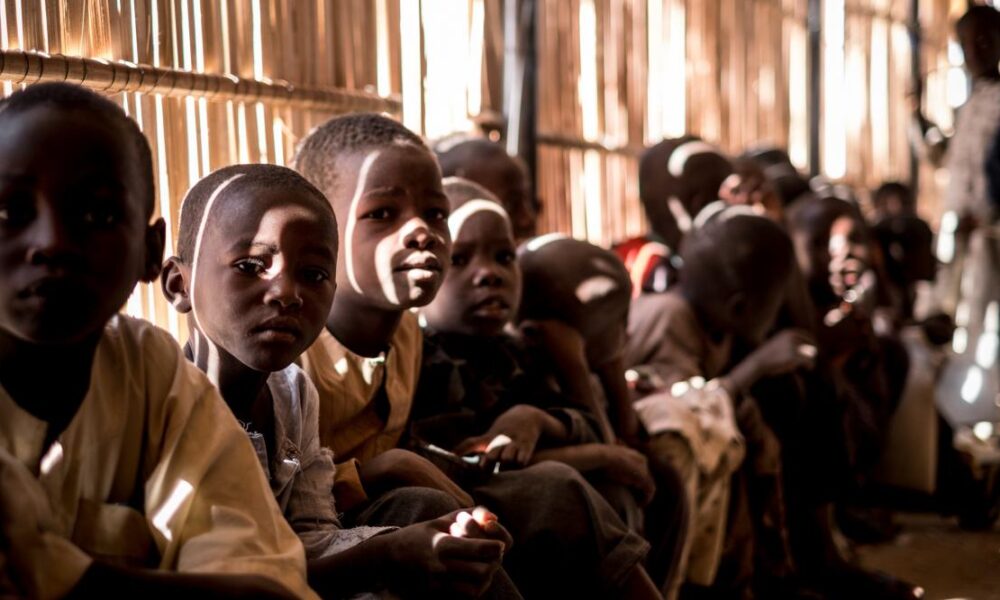The plight of out-of-school children remains a significant obstacle for Nigeria, particularly in the northern region where the problem is most acute. This pressing issue has dominated discussions across various platforms, saturating traditional media, social media, and even everyday conversations on the streets. Consequently, this article refrains from rehashing well-trodden paths concerning the causes, statistics and looming dangers, as these have already received ample attention elsewhere. Instead, the article shifts its focus towards offering innovative solutions to tackle this pervasive challenge, advocating for the strategic utilisation of artificial intelligence (AI) and other complementary technologies.
The challenge of addressing out-of-school children extends far beyond merely coaxing them off the streets and into classrooms. It’s imperative not just to enroll them but to ensure they receive quality education. Achieving this hinges on two critical elements: the presence of quality teachers and access to adequate instructional materials of high quality.
These factors are pivotal; even in modest facilities, with quality teachers and quality instructional materials, schools can produce excellent products. Conversely, a school may boast of opulent facilities akin to a luxury 7-star hotel, yet without sufficient quality teachers and instructional materials, it will inevitably produce poor products. Thus, the true measure of a school’s success lies not in its appearance, but in its ability to provide adequate quality instructional materials and quality teachers.
The World Bank is currently implementing a programme aimed at taking off out-of-school children from the streets and enrolling them in schools, with a focus on both formal and informal educational settings. In my perspective, it’s not accurate to categorise the Almajiri children on the streets as “out of school.” They are attending specialised schools where Arabic serves as the medium of instruction, primarily focusing on Quranic memorization over a span of years. However, there’s a need to integrate conventional education alongside the Quranic studies.
The World Bank initiative involves deploying teachers to these Quranic schools to deliver curricular content of the conventional education. This approach acknowledges that simply directing these children to conventional schools isn’t possible, as they are more inclined towards Quranic memorisation.
However, many children on the streets were directly enrolled in conventional schools, encouraged by providing free materials such as uniforms, books, etc. Interestingly, the world’s first university, Al-Qarawiyyin University in Morocco, started as a Quranic school over a 1000 years ago. It evolved over time to include subjects such as Arabic grammar, mathematics, medicine, etc.
Subsequently, university concept started spreading in the Middle East before Europe, America and Asia took it up. Today, Al-Qarawiyyin University remains operational and very active. The major issue with the World Bank programme is sustainability.
Here are suggestions from the perspective of AI to bridge the gap in quality teachers and adequate instructional materials to complement the efforts of the World Bank programme. Smart devices designed specifically for learning should be provided to children in both Almajiri and conventional schools to deliver instructional content.
Learning through smart devices can be engaging for children, who are digital natives. The purpose of these smart devices is to install various AI learning software for children. There are AI-driven platforms for delivering instructional content in various languages and formats, catering to diverse learning preferences and abilities.
In Nigeria, pupils are expected to learn in English and pass English subjects. However, many out-of-school children predominantly understand only local languages – such as Hausa, Yoruba, and Igbo, especially in the North. Some out-of-school children in the South can speak informal English, commonly referred to as ‘pidgin English.’ Therefore, the instructional content on the AI-driven platform can be in English with a few examples provided in Hausa, Igbo, and Yoruba to aid understanding.
Initially, the content in local languages will be limited, but it should gradually decrease until only English content remains. This approach aims to encourage enrollment and sustain participation in the learning activities.
A virtual tutor can be developed by combining AI technologies with instructional materials, many of which are already available, although typically mostly not tailored to the Nigerian curriculum and subjects.
The virtual tutor should incorporate instructional content created by high-quality teachers in line with the Nigerian curriculum. It can then be installed on smart devices to deliver this instructional content to the pupils or children at the Amajiri schools and the conventional schools.
As the virtual tutor interacts with pupils or students during the learning process, it learns their patterns of learning, enabling it to deliver personalised materials tailored to the individual’s learning pace and preferences.
Installation of an offline educational chatbot that operates without the need for a constant internet connection; the chatbot can engage learners or pupils interactively through conversation, quizzes, learning games, and the delivery of instructional content.
Additionally, it complements learning by providing additional resources such as examples and sources to relevant materials. It also has the capability to assess learning outcomes, offer fast feedback, and track learners’ progress. The digital library for children contains thousands of books, educational videos, and audio can be installed.
The AI technology embedded in the digital library delivers age-appropriate instructional content to pupils or children. Installation of an AI-driven language learning tutor that provides sessions on speaking and listening skills, supported by an AI-driven lesson plan. An adaptive learning platform that offers personalised instruction in math, reading, and other subjects for elementary school students is another required platform.
Also, there’s an AI-powered math programme designed for primary school students, featuring adaptive practice exercises and interactive games. For beginners, interactive apps that introduce letters and vocabulary to preschoolers through engaging animations and games are needed in the device.
The PBS game collection features educational games with popular PBS characters, aimed at promoting early literacy, math, and problem-solving skills.
Lastly, there’s a comprehensive early learning app covering math, reading, language arts, and more, with adaptive activities and personalized recommendations.
Providing smart devices with preinstalled AI learning software, as described in the article, can mitigate the challenge of access to quality teachers and instructional materials. On the learners’ part, the device can encourage digital natives to enroll in schools and engage in the learning process ubiquitously.
Chiroma, Asst. Professor of Artificial Intelligence, University of Hafr Al Batin, Saudi Arabia, [email protected]











